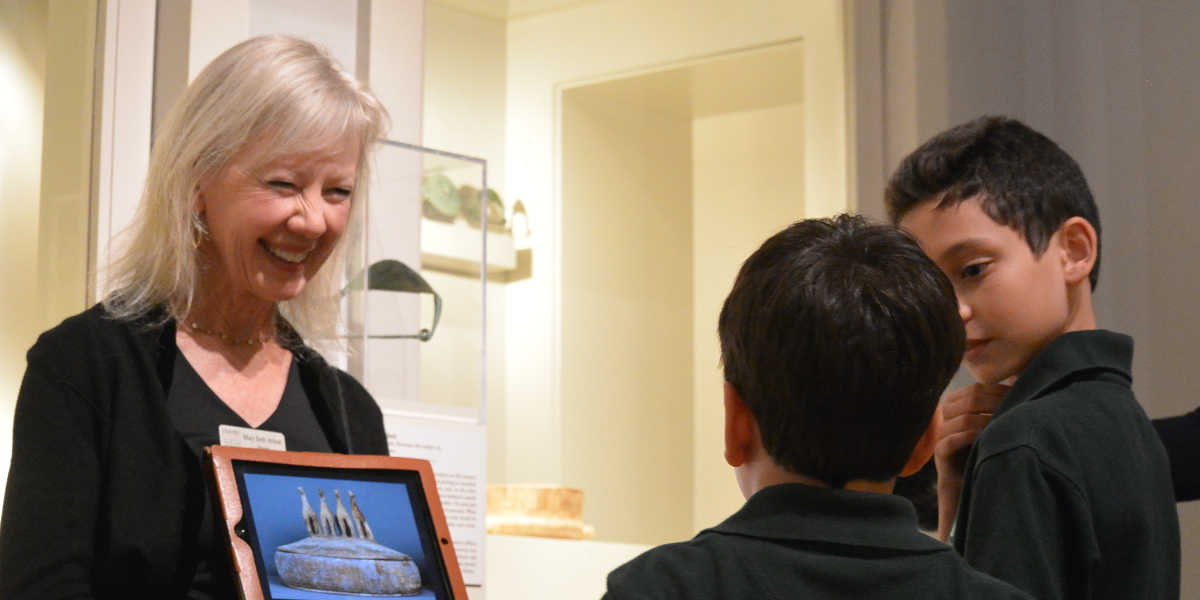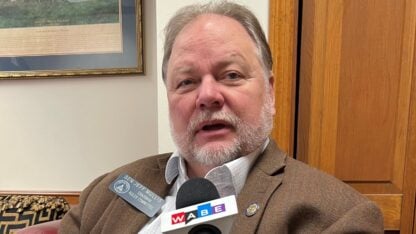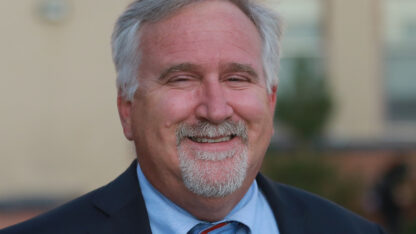Emory Program Combines Art, Science Through Conservation

Al Such / WABE
This story is part of WABE and American Graduate’s Advancing Atlanta: Education series. For more stories, click here.
Blue may be the most referenced color in popular culture – “Blue Valentine,” “Blue is the Warmest Color,” and “Behind Blue Eyes” to name a few examples – but it’s actually an uncommon hue in the natural world. Perhaps it was this rarity that captured the imaginations of ancient cultures, including Egyptians in the age of pharaohs. Some 4500 years ago, the Egyptians figured out a way to synthesize the pigment we now know as “Egyptian Blue.”
This is a noteworthy achievement in art history and science, but the knowledge of just how the Egyptians created that stunning shade of bright blue was thought to have died with the Roman Empire. It was not until the end of the 19th century that modern scientists were able to determine the chemical composition of Egyptian Blue, as well as the process behind the elusive pigment.
It’s that kind of multidisciplinary knowledge that art conservators like Renée Stein need to properly preserve, repair and identify objects of art and culture. As Chief Conservator at Emory University’s Michael C. Carlos Museum, Stein is responsible for the care of ancient artifacts, like the coffin of Tanakhtnettahat — an intricately painted wooden coffin that’s survived three millennia in remarkably good shape, though it’s had some repair along the way.
It’s part of Stein’s job to distinguish between 3000-year-old craftsmanship and the relatively recent repair jobs. To do that, she needs to draw upon her knowledge of art history as well as chemistry: Under infrared light, Egyptian Blue seems to glow bright white. Anything that’s blue to the naked eye but does not glow under infrared light is not original.
That’s the kind of simple, visual, real-world application students can see for themselves on the new “Science Behind Art Conservation” tour at the Carlos Museum. Stein introduced this STEAM tour to a small group of educators at an Atlanta Science Festival event called “Integrating Art Conservation Science into Your Classroom Teaching.” Docents led attendees on an abbreviated tour, followed by demonstrations of lab activities teachers can take to their classrooms.
Emory’s art conservation staff teamed up with Atlanta teachers to design these classroom-ready lab activities. Together, they created experiments that not only met Georgia Performance Standards in chemistry and biology, but consider the cost of materials, materials typically available, and safety. The Carlos Museum website also offers lesson plans, teacher guides, worksheets and more.
Karina Hatcher, a pre-K and kindergarten teacher, attended the Atlanta Science Festival event at the Carlos. When asked if she thinks kids are more engaged with activities when the arts and sciences are integrated, she agreed. ”Absolutely. It brings it to a level where it makes more sense, and it feels more natural.”

This story is part of American Graduate, Let’s Make It Happen, a public media initiative made possible by the Corporation for Public Broadcasting.
9(MDAxODM0MDY4MDEyMTY4NDA3MzI3YjkzMw004))








